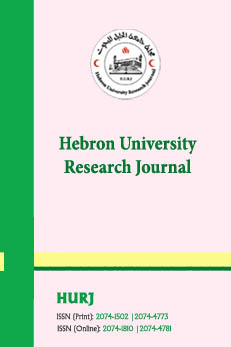Hebron University Research Journal (HURJ): B- (Humanities)
The Language of Occupation in Palestine
- Author: أ. د. أحمد العطاونة
- ISBN: 2074-4781
- N°: 0
- Year: 2010
-
Link:
 The Language of Occupation in Palestine
The Language of Occupation in Palestine
Review
Abstract:
The analysis of political discourse under occupation reflects the spirit of new orientaliism in the Middle East. The objective of orientalism is to create two contrastive pictures of two types of people , a powerful brilliant and civilized nation hungry for control and sovereignty against a powerless uncivilized nation whose aspiration does not go beyond struggle by all means for survival including terrorism and obsequiousness.
This is the case of the Israeli occupation in Palestine. The realization of power through language is evident in the quotes of hate speech of the Israelis. The aspects of hate speech project the ideology of occupation. Such aspects will be analyzed to explore the linguistic features of such language. In analyzing the linguistic means to spread hatred in the interest of power, speech acts by the authorities in power (statement, question, command, promise, threat, etc.) are important, because they enforce their interests. Some speech acts are associated with special supporting conventions that enforce one’s power and serve one’s interests such as insult and slander, condemnation, and so forth (Brekle, 1989). It has been noticed that such speech conventions of insults and slander are abundant in the Israeli quotes.
Applying Grice’s maxims to Israeli quotes, it is found that, by motivation of power, such quotes meet, to a large extenct, clarity, brevity, relation and truthfulness; however, the quotes of Palestinians, motivated by lack of power, barely meet Grice’s maxims. The main arguments in the Israeli ideology are supported by prejudice keywwords supporting the main arguments like use of imagery and metaphor in particular, i.e., images of hated creatures, killing, arrogance, deception and lies.The focus here is on: 1- the Israeli discursive position as power; 2- discursive position of the Palestiniians lacking power; and 3- the asymmetrical discursive relation between the Israelis and Palestinians.
الملخص:
ان تحليل النصوص السياسية في ظل الاحتلال يعكس صورة جديدة من الاستشراق. فحيث ان هدف الاستشراق هو خلق صورتين متناقضتين لشعبين مختلفين بحيث تكون إحداهما صورة لشعب قوي وذكي ومتحضر يتوق الى السيطرة والنفوذ مقارنة مع صورة شعب ضعيف وغير متحضر لا يتعدى طموحة محاولة البقاء عن طريق الارهاب والخضوع. وهذه حال الاحتلال الاسرائيلي في فلسطين. فصورة القوة تنكشف بشكل واضح من خلال لغة الكراهية في تصريحات زعماء اسرائيل. وسمات لغة الكراهية تكشف ايديولوجية الاحتلال.
وبتحليل سمات هذه اللغة سيتم معرفة ميزاتها اللغوية. وتحليل سمات لغة القوة لنشر الكراهية من أجل تحقيق مصلحة القوي فإن أفعال الكلام مثل التهديد والامر والتصريح والوعد الخ... تستعمل لتحقيق هذه المصلحة. وكما يقول بريكلي سنة 1989 قان افعال الكلام المذكورة ترتبط بدعم مظاهر لغوية تقليدية مثل الاهانة والتحقير والادانة. وتبين الدراسة أن مثل هذه المظاهر اللغوية تتواجد بكثرة في التصريحات الاسرائيلية. وبتطبيق مبادئ جرايس في تحليل التصريحات الاسرائيلية يتبين أنها بدافع القوة تنسجم مع تلك المبادئ من حيث وضوح القول والاختصار والايجاز والمصداقية التي تؤدي الى عدم اللف حول المعنى وتخلو من كل صفات التلطيف من اجل التخفيف من وقع الكلام أي لا يكون هناك أي نوع من التأدب في الحديث.
وعلى العكس من ذلك فإن التصريحات الفلسطينية تخلو من هذه السمات تقريبا بدافع الضعف والخوف. وأن محاور الايديولوجية الاسرائيلية تعززها كلمات الكراهية والحقد من خلال التشبيهات والصور وبشكل خاص صور الحيوانات الكريهة والقتل والغطرسة والخداع والكذب. وعليه فان محاور البحث تتركز على: 1. موقف القوة الاسرائيلي من خلال النصوص، 2. موقف الضعف الفلسطيني من خلال النصوص، 3. عدم التوافق بين النصوص الاسرائيلية والفلسطينية.





